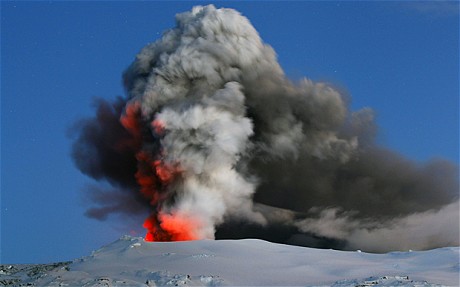– Earthquake swarm under Bardarbunga volcano, Iceland
* * *
PayPal: Donate in USD
PayPal: Donate in EUR
PayPal: Donate in GBP
The man who trades freedom for security does not deserve nor will he ever receive either. – Benjamin Franklin
– Fissure Eruption Begins In Iceland As Bardarbunga Magma Breaches The Surface (ZeroHedge, Aug 29, 2014):
As Icenews reports, a fissure eruption has started in the Holuhraun lavafield north of Dyngjujökull. Newly formed crevasses were spotted in surveillance flyovers by scientists yesterday and at that time geophysicist Magnús Tumi Guðmundsson estimated that the magma intrusion which had been monitored for the previous week was moving only 2 kilometres under the surface. The magma has now breached the surface and the volcanic eruption has been confirmed by scientists in the field. The low frequency tremors suggests the eruption is located outside the glacier. The blaze can be observed in Mila’s webcameras, two of which are trained on Vatnajökull glacier’s Bárðarbunga area.
…
– Aerial video of Iceland eruption (Ice Age Now, Aug 29, 2014):
29 Aug 14 – “First aerial footage of the fissure eruption!” says reader Don Brown. Also great photos.
The fissure is thought to be about 1 mile long and runs northeast / southwest. The lava is thin and fast flowing southeast. This is the fissure eruption, which appears to be available as a multi-called dynamic operation of Dyngjujökli towards the caldera.
Read moreFissure Eruption Begins In Iceland As Bardarbunga Magma Breaches The Surface

Lava and ash explode out of the caldera of Iceland’s Eyjafjallajokull volcano Photo: REUTERS
Geologists detected the high risk of a new eruption after evaluating an increased swarm of earthquakes around the island’s second largest volcano.
Pall Einarsson, a professor of geophysics at the University of Iceland, says the area around Bárdarbunga is showing signs of increased activity, which provides “good reason to worry”.
He told the country’s national TV station that a low number of seismometer measuring devices in the area is making it more difficult to determine the scale and likely outcome of the current shifts.
Read moreScientists Warn That Iceland’s 2nd Largest Volcano Looks ‘Set To Erupt’